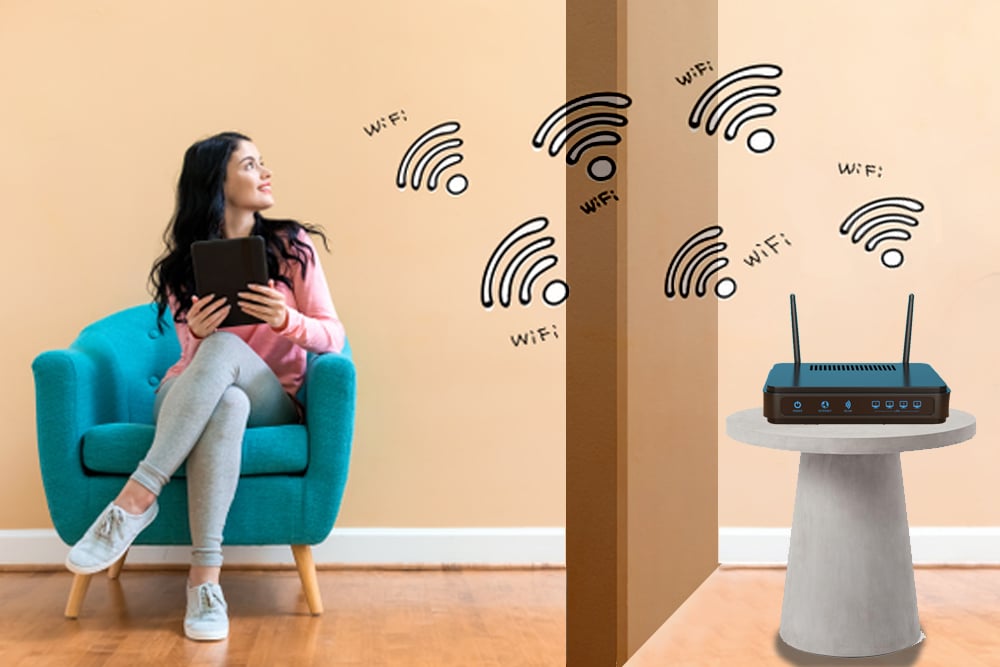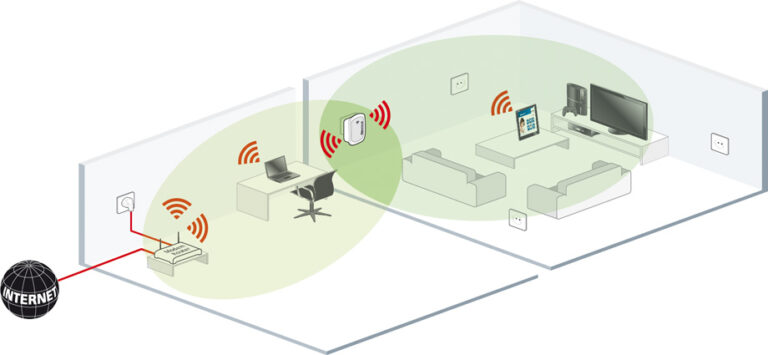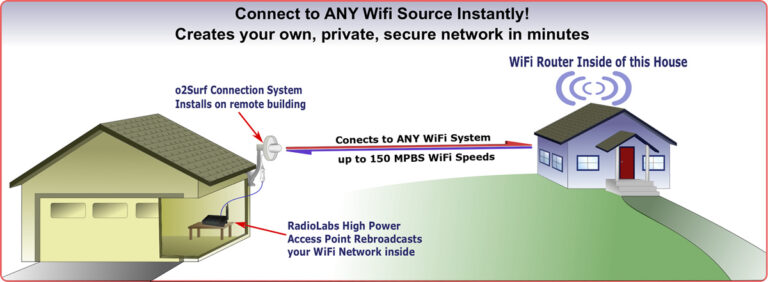Can Wi-Fi Go Through Walls?
Wi-Fi is an increasingly popular technology that provides internet access without the need for wires. It is convenient for a number of reasons, but one of the most common questions asked is whether Wi-Fi can go through walls. The answer to this question is yes, but there are several factors that can affect how well Wi-Fi signals travel through walls. These include the type of wall material, the thickness of the walls, and the distance between the router and the device. With the right setup, it is possible to achieve good Wi-Fi coverage throughout a home or office.
What is Wi-Fi?
Wi-Fi is a technology that uses radio waves to provide wireless high-speed Internet and network connections. It is a convenient way to access the Internet without having to be physically connected to a router or modem. Wi-Fi networks are typically set up in homes, offices, and public areas such as airports, hotels, and coffee shops, and are widely used for communication, data sharing, and entertainment.
Wi-Fi uses radio waves, which are a type of electromagnetic radiation, to send and receive data over short distances. These radio waves travel through the air and can penetrate walls and other obstacles. This means that Wi-Fi signals can travel from one location to another, allowing users to access the Internet from multiple locations. However, the signal strength of a Wi-Fi signal can be weakened by physical obstacles like walls, floors, and ceilings. The more walls a signal has to pass through, the weaker the signal will be.
How Does Wi-Fi Work?
Wi-Fi technology is an integral part of our everyday lives, but have you ever wondered how it works? Wi-Fi is a wireless technology that transmits data between two or more devices over a short-range radio frequency. It works by using radio waves to send information between a router and an internet-enabled device. The router receives information from a modem, which is connected to the internet, and then broadcasts it in the form of radio waves. The device receiving the signal then converts the radio waves into a usable internet connection.
In order for Wi-Fi to work, the router must be within range of the device, and the signal must be able to penetrate walls and other obstacles. To this end, Wi-Fi routers are designed to send out signals in all directions, allowing them to reach farther than if they were only sending out signals in one direction. Additionally, certain materials, such as brick and concrete, can weaken the signal and make it more difficult for it to penetrate walls.
Wi-Fi technology has become increasingly commonplace in recent years, and understanding how it works is essential to getting the most out of your internet connection. By learning more about Wi-Fi and how it works, you can ensure that your connection is reliable and secure.
What Are the Factors Affecting Wi-Fi Through Walls?
Wi-Fi technology is a great way to stay connected, but many people wonder if it can go through walls. The answer is yes, but there are certain factors that affect how well Wi-Fi signals travel through walls. These include the type of wall material, the age of the building, the thickness of the walls, and the number of walls the signal must pass through. Additionally, the layout of the building can also play a role in how far a Wi-Fi signal can penetrate.
The type of wall material is the biggest factor in determining how well Wi-Fi signals can pass through walls. Different materials like brick, wood, and drywall all have varying levels of signal absorption, with brick and concrete being the most effective. The age of the building can also affect the quality of the signal, as older buildings may have thicker walls that are more difficult for the signal to penetrate. Additionally, the thickness of the walls is another key factor, as the thicker the walls, the greater the signal attenuation.
The number of walls the signal must pass through can also affect its strength. If a signal has to go through multiple walls, it may be weakened to the point of unusable. Lastly, the layout of the building can be a major factor in how far the signal can reach. Certain layouts, such as interior walls or walls with metal frames, can further reduce the effectiveness of the signal.
In conclusion, Wi-Fi signals can go through walls, however, there are certain factors that can affect how well they travel. These include the type of wall material, the age of the building, the thickness of the walls, the number of walls the signal must pass through, and the layout of the building. By understanding these factors, you can ensure that your Wi-Fi signal has the best chance of reaching its destination.

Can Wi-Fi Go Through Walls?
Wi-Fi has revolutionized the way we communicate and interact with the world. It is a wireless technology that allows us to access the internet from any location. But many wonder if Wi-Fi can go through walls.
The answer is yes, it can. Wi-Fi signals can travel through walls, albeit at a reduced strength. The strength of the signal depends on the material of the wall. For example, walls made of brick or concrete will reduce the signal strength more than those made of wood or drywall. Additionally, the thickness of the wall also affects the strength of the signal, with thicker walls reducing the signal more than thinner walls.
The distance of the router from the device also affects the signal strength. The further away the router is, the weaker the signal will be. To maximize the signal strength, it is important to place the router as close to the device as possible. Additionally, the router should be placed at a higher elevation than the device.
In conclusion, Wi-Fi does have the capability to travel through walls. However, the strength of the signal will depend on the material and thickness of the wall, as well as the distance of the router from the device. By following the right strategies, you can maximize the signal strength and enjoy a strong Wi-Fi connection even when the router is behind a wall.
How to Optimize Wi-Fi Through Walls?
Wi-Fi is an integral part of our lives and it’s hard to imagine a life without it. But if you’re dealing with thick walls and floors, the signal can be weakened or blocked completely. This poses a problem for those who rely heavily on Wi-Fi for work or entertainment. Fortunately, there are ways to optimize Wi-Fi through walls.
First, it’s important to understand the physics of Wi-Fi and how it interacts with walls. Wi-Fi is a type of radio wave that is transmitted from a router to a device. These waves can be blocked or weakened by physical objects, such as walls, furniture, and thick insulation. To optimize Wi-Fi through walls, it’s important to understand the layout of the walls, the materials they are made of, and the location of the router.
The next step is to make sure the router is in the best possible location. If it is too close to a wall, the signal can be blocked. It is also important to make sure there is no interference from other electronics. The router should also be placed in an open area, away from furniture and other objects.
To further optimize Wi-Fi through walls, it is important to use the right type of antenna. If the router is placed too far away from the device, an antenna with a higher gain can be used to extend the range. This will help to ensure that the signal is strong enough to reach the device.
Finally, it is possible to optimize Wi-Fi through walls by using a mesh network. A mesh network uses multiple routers that are connected to each other to create a strong, wide-ranging signal. This is especially beneficial in large homes or offices where Wi-Fi needs to be spread across multiple rooms.
By understanding the physics of Wi-Fi, optimizing the router’s location, using the right antenna, and setting up a mesh network, it is possible to optimize Wi-Fi through walls. This will help ensure that the signal is strong enough to reach the device and provide the best possible experience.
Conclusion
In conclusion, we can see that Wi-Fi can indeed travel through walls, albeit at reduced speeds. The type of walls, distance, and the number of walls that the signal has to go through all play a part in determining the speed of the connection. However, due to the nature of modern Wi-Fi systems, we can almost guarantee that any Wi-Fi signal will be able to pass through walls, so you don’t have to worry about your connection being cut off. While there is no one-size-fits-all answer to this question, with the right setup and understanding of the technology, you can ensure that your Wi-Fi signal can reach all corners of your home.
FAQs About the Can Wi-Fi Go Through Walls?
1. Does Wi-Fi Signal Strength Decrease When Going Through Walls?
Answer: Yes, Wi-Fi signal strength will decrease when passing through walls as the signal is obstructed, although the exact amount of signal loss will depend on the type and thickness of the wall.
2. What Can I Do to Improve Wi-Fi Signal Strength in My Home?
Answer: Wi-Fi signal strength can be improved by using a Wi-Fi range extender or access point, as well as by placing the router in an open area with few walls or other obstacles between it and the device accessing the signal.
3. Do Metal Objects Affect Wi-Fi Signals?
Answer: Yes, metal objects can block or weaken Wi-Fi signals as metal reflects the signal away from the intended destination.
Conclusion
In conclusion, Wi-Fi signals can go through walls, but their strength and range will be reduced depending on the thickness and material of the wall. While some walls may not completely block the signal, thicker walls and walls made of certain materials may block the signal entirely. Therefore, it is important to consider wall material and thickness when determining how effectively Wi-Fi can penetrate walls.


